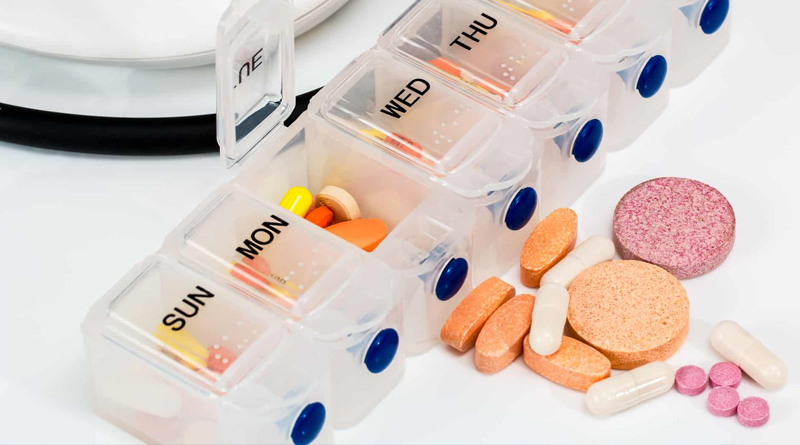Nearly two out of three Canadian seniors are now taking as many as 5 or more prescription drugs and if you fit into that category, you also have an increased risk of falling.

Healthy Living
One in three older adults aged 65+ will fall each year and falls are the leading cause of injury hospitalization in Manitoba, accounting for more than $164 million in healthcare spending. As reported by the Winnipeg Regional Health Authority, these injuries can be quite serious, often resulting in a bone fracture with an average length of stay in the hospital of 31 days. In fact, 95 per cent of hip fractures are the result of falls. Even more alarming, falls are also the leading cause of injury-related deaths for older adults. Given these outcomes, fall prevention is a critical component of any healthy aging strategy and understanding the risk factors can help you stay on your feet.
Ask your pharmacist about the risk.
Jason Hoeppner, pharmacist and owner of the Medicine Shoppe on Osborne Street says that when screening patients for risk of falls, medications are one of many factors that should be taken into consideration. “As a pharmacist, I’m always looking for medications or combinations of medications that can increase this risk. Other factors we assess include cognitive and sensory deficits, an individual’s strength and balance, wearing proper footwear (especially in winter), assistive devices like a walker or cane, their home/neighborhood environment and caregiver support.” Knowing a patient’s history and screening for risk factors helps pharmacists and healthcare professionals provide targeted fall prevention education.
Medication use or more specifically, polypharmacy, (the use of five or more medications) is a known risk factor for falls. Approximately 1.6 million Canadians or one in four older adults take ten or more medications. This can be problematic because taking multiple medications can increase the chance of drug interactions and possible adverse reactions, which can in turn increase your risk of falling. Hoeppner also explains that as we get older, our bodies breakdown medication differently. “In general, our bodies do not process and eliminate medications as efficiently as we age. This means that the level of many medications will be higher (and exert a stronger effect) in our older patients than in younger patients if the dose is not adjusted to account for this.”
According to Hoeppner, two classes of drugs, antidepressants and opioid painkillers (like codeine and morphine) pose the biggest risk for falling. Other medications that can increase fall risk include antipsychotic medications, sleeping pills, blood pressure medications and some anti-inflammatories. Possible side-effects from these medications can include things like drowsiness, dizziness, gait problems (walking abnormalities) or visual disturbances.
So, what steps can you take to mitigate your risk of falling if you are taking multiple medications? A great place to start is a routine medication review with a pharmacist or healthcare provider. Under their supervision, adjustments or the removal of any unnecessary medication may be effective in reducing the risk of falls. Hoeppner said they offer sit-down medication reviews, “which can often highlight medications that are no longer needed and can be stopped with the prescriber’s approval. If there is still a need for the medication, sometimes a lower dose can give the same benefit with a reduced risk of falling. If there are interacting medications, we can work with the prescriber to switch to a non-interacting medication.” It’s also important to keep an up-to-date list of all your medications and to take them exactly as directed. Keep in mind too that not all medications are prescriptive – over the counter medications like allergy or cold/flu along with natural herbal products should also be taken into consideration in a medication review. Hoeppner added that, “alcohol and cannabis can also increase fall risk and can interact with medications as well.”
Ask your own doctor or pharmacist about a medication review and never stop taking a medication without first consulting your healthcare provider. Hoeppner recommends finding a pharmacist you are comfortable with and sticking with them for consistency. As a final proactive step, if you’re concerned about falling, consider a personal help button with fall detection capabilities. These buttons contain sensors which can detect rapid changes in height and direction, indicators of a fall. Victoria Lifeline offers HomeSafe with AutoAlert, which is designed to place a call for help automatically if a fall is detected. Call Victoria Lifeline (204) 956-6777 for more information.
For a more comprehensive checklist on how to prevent falls, check out the Winnipeg Regional Health Authority’s fall prevention website https://preventfalls.ca/
Finally, the Canadian Medical Association recommends a great website for understanding and managing your medications called Knowledge is the Best Medicine. You can even create your own medication record and download an APP on your smartphone for an up-to-date medication record at your fingertips. For more information, please visit https://www.knowledgeisthebestmedicine.org/index.php/en/know_your_medications.1.html
This article is meant to be informational in nature and is not intended to replace the advice of your healthcare provider.
Krystal Stokes is the communications manager at Victoria Lifeline, a community service of the Victoria General Hospital Foundation.

